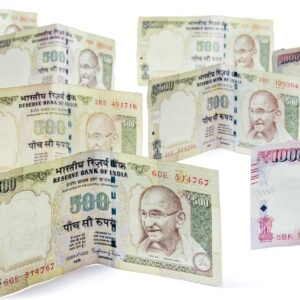The narrative of the “Indian Dream” has evolved significantly in the post-liberalization era. Today, it embodies the aspirations of millions who seek prosperity and opportunity through the mechanisms of capitalism. Since the economic reforms of the 1990s, capitalism has not only transformed the Indian marketplace but also redefined what it means to achieve success in India’s socio-economic context.
Transformation of the Indian Economy
1. Economic Liberalization:The 1991 economic reforms marked a pivotal shift for India from a primarily state-controlled economy to a market-driven one. These reforms opened up various sectors to private and foreign investments, unleashing a wave of entrepreneurship, innovation, and competition.
2. Rise of the Private Sector:Post-liberalization, the private sector in India has flourished, contributing significantly to GDP growth and employment. Companies in IT, telecommunications, pharmaceuticals, and manufacturing have become global players, showcasing the potential of Indian capitalism on the world stage.
Capitalism and the New Indian Dream
1. Entrepreneurial Aspirations:The modern Indian dream often revolves around entrepreneurship. Success stories of companies like Flipkart, Ola, and Paytm inspire a new generation of Indians to start their own businesses, leveraging the capitalist framework to innovate and disrupt traditional industries.
2. Wealth Creation and Social Mobility:Capitalism has enabled unprecedented social mobility in India. Individuals from various socio-economic backgrounds have climbed the economic ladder, not just through jobs but also through creating businesses that add value to the economy.
3. Consumer Empowerment:With increased competition and choice, Indian consumers have benefited from improved quality of products and services. This consumer empowerment is a direct outcome of capitalist practices, enhancing the quality of life and personal freedom.
Challenges Within the Capitalist Framework
1. Inequality and Disparity:While capitalism has created wealth, it has also led to widening income disparities. The rich get richer, and the poor struggle to climb out of poverty, challenging the inclusivity of the Indian dream.
2. Environmental Concerns:Rapid industrial growth has raised serious environmental concerns. Issues like pollution, resource depletion, and sustainability are pressing challenges that need addressing within the capitalist system.
3. Job Security and Workers’ Rights:The focus on profitability has sometimes come at the cost of job security and fair labor practices, particularly in sectors like manufacturing and gig economy jobs.
Future Outlook: Refining the Dream
1. Promoting Inclusive Growth:For capitalism to be sustainable, it must be inclusive. Policies need to ensure that the benefits of economic growth reach all sections of society, with affirmative actions to uplift underprivileged communities.
2. Sustainable Development:Balancing economic growth with environmental sustainability is crucial. This includes promoting green technologies, sustainable urban planning, and responsible consumption and production patterns.
3. Reinforcing Social Safety Nets:Enhancing social security systems to protect those vulnerable to the volatility of market forces is essential. This includes healthcare, education, and unemployment benefits.
Conclusion
The modern Indian dream, shaped by the forces of capitalism, offers both vast opportunities and significant challenges. As India continues to navigate its path in the global economy, refining capitalist practices to ensure they are equitable and sustainable will be key to realizing the true potential of this dream. Balancing growth with social and environmental responsibility will define the success of the Indian dream in the 21st century.








